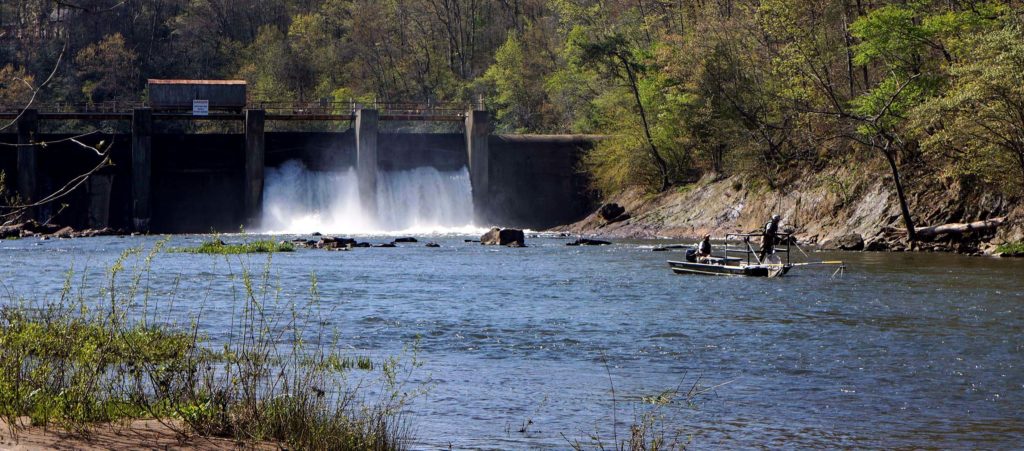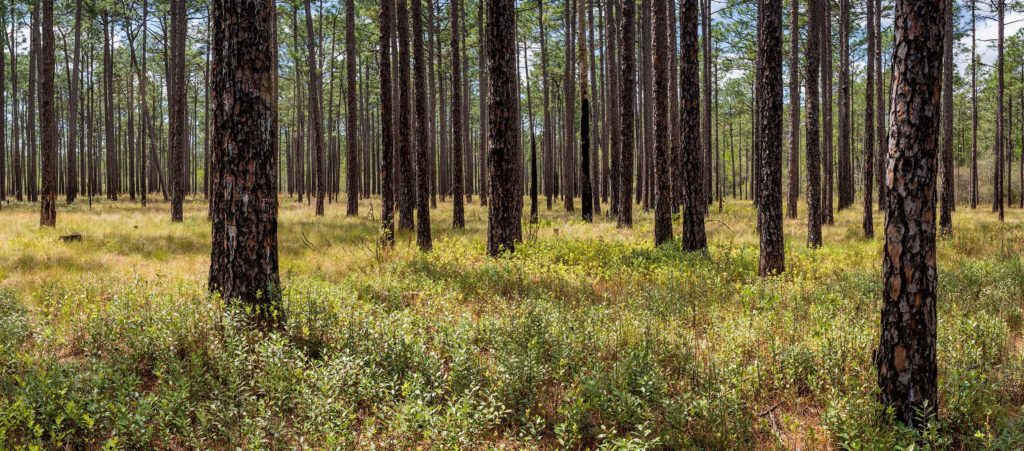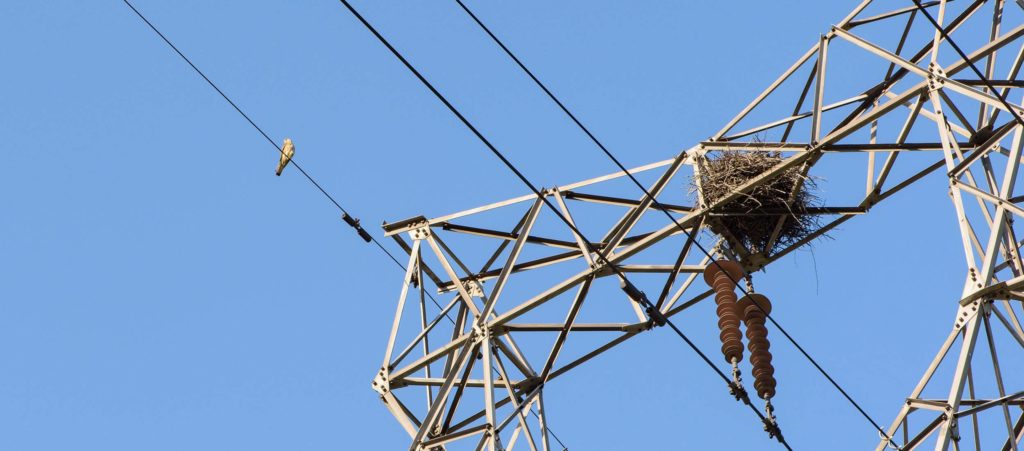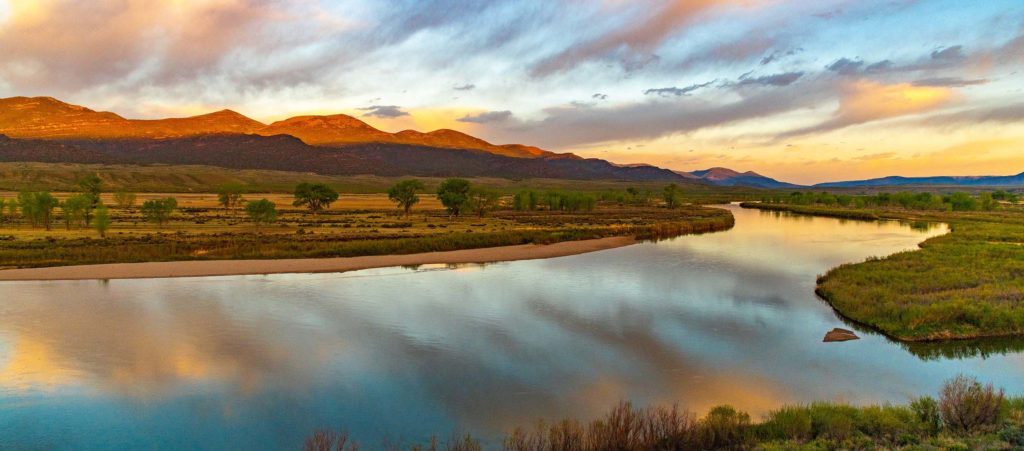EPRI research explores opportunities and challenges facing utilities pursuing conservation not driven by compliance
There was a time when longleaf pine forests dominated the landscape across the southeastern United States. In the early 1800s, the ramrod-straight, evergreen conifers covered over 90 million acres from Virginia to Texas.
As the U.S. grew, longleaf pine trees were coveted for many uses. The wood itself was used to build homes and shops across colonial America, while the pitch, tar, and turpentine made from pine tar kept wooden ships afloat. Harvesting the trees combined with clearing forests for farms and settlements nearly wiped out longleaf pine trees altogether. At one point, only 3 % of the original 90 million acres of longleaf pine forests remained.
As longleaf pine forests disappeared, so too did the abundant and diverse ecosystems the trees anchored. However, the remaining longleaf forests still provide habitat to over half of the 1630 plant species found in the southeastern U.S. and to animals ranging from the ubiquitous white-tailed deer to the endangered indigo snake, red-cockaded woodpecker, and gopher tortoise.
Company Culture and Business Interests Driving Voluntary Conservation
With a long history of operation across the southeastern U.S., Southern Company has witnessed the decline of the longleaf pine. This decline ultimately prompted the utility to take action, though the task was daunting.
“We decided to embark on a significant collaborative conservation effort to restore these vital ecosystems. We understood how difficult it would be to significantly increase the acreage of an entire forest ecosystem, but also knew the conservation benefits of the longleaf ecosystem were meaningful on many fronts,” said Joe Drumm, natural resources manager at Southern Company. “Easily attainable conservation opportunities are nice, but that should not be the driving factor.”
Southern Company’s commitment to longleaf forest conservation has been significant despite the challenges. The utility is one of numerous public and private organizations working with the National Fish and Wildlife Foundation to fund the Longleaf Landscape Stewardship Fund, which supports projects that conserve over 350,000 acres of longleaf pine habitat and the species that rely on the forests. Between 2004 and 2020, the utility invested over $8.7 million to support the fund’s programs.
Besides the significant investment, Southern Company’s longleaf pine conservation effort is distinguished by being voluntary. In most cases, utility conservation is driven by the need to comply with state or federal regulations, particularly the Endangered Species Act (ESA).
By sharp contrast, Southern Company’s commitment to longleaf pine conservation–along with many other voluntary conservation measures, including watershed protection throughout Alabama, Georgia, and Mississippi and migratory bird conservation–flows out of a corporate culture that prioritizes the natural environment and the communities that benefit from it. “These are the places where we spend the weekend with our families hiking and fishing,” said Jesalyn McCurry, voluntary conservation manager at Southern Company. “I think it is simply that we are stewards of the communities that we serve.”
Southern Company’s commitment to voluntary conservation is also driven by a belief that these efforts can result in more efficient and less impactful deployment of energy infrastructure. “It’s no secret, when you are looking at the complex work a utility undertakes, that we have the potential to touch a lot of our natural resources,” said Drumm. “Whether we are constructing a solar installation, operating a wind farm, or deploying modern grid infrastructure, performing work in an ecosystem that’s thriving is less impactful as compared to one that is in an imperiled state. Compromised ecosystems are much more fragile than healthy ones. Our goal is to operate our business without permanent impact to our natural resources.”
For the species and the ecosystems Southern Company seeks to help, what really matters is that voluntary conservation can make a big impact. The total area of longleaf pine forest has nearly doubled from its low point—an achievement that has cascading benefits. “We are making headway. And because we are, the new habitat has aided in the recovery of several species,” said McCurry. For example, last year, the U.S. Fish and Wildlife Service (USFWS) proposed to reclassify the red-cockaded woodpecker from endangered to threatened because its population has stabilized.
EPRI Research Into Challenges and Opportunities for Voluntary Conservation
Every utility has its own unique reasons for pursuing (or not pursuing) conservation efforts that aren’t mandated by the ESA or other regulations. In an effort to better understand what motivates utilities to engage in voluntary conservation and to pinpoint some of the barriers and challenges, EPRI conducted a survey and in-depth interviews with the 17 utilities that belong to EPRI’s Endangered and Protected Species Program. The utilities represent about 30 % of the total megawatts generated by EPRI members and 21 % of all generation across the U.S.
“Sometimes, as a utility, you have to do something, like obtain a permit or buy habitat because you are building a transmission line. That is not voluntary,” said Christian Newman, an EPRI technical executive who led this first-of-its-kind research into voluntary conservation. “We really wanted to understand all of the other conservation work that’s not about compliance as a way to chronicle it because it’s not measured and to find ways to encourage more of it.”
In the research, EPRI defined voluntary conservation to include:
- Candidate conservation agreements with assurances (CCAAs): These agreements with the USFWS are designed to conserve species that are at risk of being listed under the ESA. The agreements spell out measures an entity can take to avoid facing any additional legal restrictions or obligations if a species does end up being listed.
- Candidate conservation agreements (CCAs): These agreements mirror CCAAs except that they do not provide any legal assurance that a participant won’t face added restrictions or obligations if a species ends up being listed under the ESA.
- Other activities to conserve at-risk or listed species: These include any actions a utility takes that are not mandated under the ESA or covered by a CCAA, CCA, or SHA.
- All other voluntary conservation activities: These are any actions not taken for purposes of compliance with the ESA or any state conservation laws or programs. They include activities like Southern Company’s contributions to the Longleaf Landscape Stewardship Fund.
Why Utilities Pursue Voluntary Conservation
Beyond providing helpful definitions of voluntary conservation, EPRI’s survey and follow-up interviews illuminated both drivers of this conservation and hurdles to conducting more of it. Virtually all of the companies that participated in the survey engaged in conservation that was not dictated or recognized by the ESA, including everything from building bird nest structures in transmission towers to conducting surveys of species beyond what ESA permits require.
Overall, the report found several common drivers propelling utilities to engage in voluntary conservation efforts. The primary reason utilities pursue voluntary conservation is that they can see direct benefits to their primary business of producing or delivering electricity. These business benefits fall into two categories: lower operations and maintenance (O&M) costs and reduced utility risks.
Here are some ways voluntary conservation can potentially lower O&M costs:
- Protecting an at-risk species before it is listed as endangered has the obvious conservation benefit of helping the species itself. However, it also can avoid the potentially high cost of compliance required once a species is listed under the ESA.
- Moving the status of a species from endangered to threatened can lead the USFWS to exempt utility activities from requiring an ESA permit. This eliminates the work and costs involved in the permitting process.
- Moving a species off the endangered list eliminates the cost of ESA compliance. While conservation steps may still be required, compliance with the time-consuming and expensive ESA permitting and consultation requirements is not.
Voluntary conservation can also help mitigate the risks utilities face when listed or at-risk species are present. For example:
- Voluntary conservation initiatives can lessen long-term regulatory risk under the ESA. For instance, utilities surveyed by EPRI said that enrolling in a CCAA—which guarantees no additional ESA obligations if its terms are met—was a primary motivation for voluntary conservation.
- ESA-related risk is also reduced by the mitigation credits utilities receive for voluntary conservation efforts. These credits provide a clear path to ESA compliance and don’t require a utility to uncover other options during the permitting process. Survey respondents also said that voluntary conservation provides more control over future ESA compliance, delivering more flexibility and better terms in negotiations with the USFWS.
When bottom-line benefits accrue, just about all utilities are eager to pursue voluntary conservation. But a utility’s business type often dictates its willingness and capacity to pursue voluntary conservation. “Our research really highlighted the big distinction between the different types of utilities and the unique hurdles they may face,” said Newman.
At a big-picture level, here’s what EPRI’s research found:
- Because electric cooperatives are member-owned, the interest of owners in voluntary conservation and their willingness to pay for it dictate the initiatives they pursue.
- Public utilities are nonprofits, which means voluntary conservation must be funded with O&M budgets. Unless it directly mitigates risk or lowers O&M costs, voluntary conservation can be challenging. The exception is when conservation is an explicit part of the utility’s mission. In those cases, public utilities can invest in voluntary conservation that doesn’t have a clear bottom-line benefit.
- Investor-owned utilities have the most latitude to invest in voluntary conservation. Because they earn profits, investor-owned utilities have the flexibility to use O&M dollars or money from profits to fund conservation. Additionally, voluntary conservation with no clear bottom-line benefit is also driven by shareholder and investor pressure.
Voluntary Conservation at a Cooperative
Tri-State Generation and Transmission Association is a Colorado-based not-for-profit cooperative with 45 members. Though Tri-State doesn’t participate in any formal ESA programs, the utility is active in a range of voluntary conservation efforts.
One is the Yampa River Fund, a collaborative effort that provides funding to support aquatic habitats along the 250-mile river, which is an important part of the Colorado River system. Tri-State is also an active participant in Colorado’s Ranching for Wildlife program, pursuing wildlife habitat improvement and increased public access to private lands for hunting and environmental recreation.
In these and other voluntary conservation initiatives, a common theme behind Tri-State’s involvement is that the efforts seek to address multiple objectives. Grants awarded by the Yampa River Fund in 2021, for instance, include forest restoration, design, and engineering to improve recreation, trout habitat improvement, and the release of reservoir water to benefit both the environment and neighboring communities. The Ranching for Wildlife program is similarly multi-faceted, helping to promote improved livestock grazing, wildlife habitat management, and youth hunting programs on over 1.2 million acres of private ranchland across the state.
The fact that voluntary conservation participation is concentrated in the northwest Colorado region that Tri-State operates in and serves is a big reason the cooperative supports both. Ultimately, though, the choice of which voluntary conservation efforts to assist with financial and staff resources comes down to what the cooperative’s members want.
“It ties back to our business model. We are a member-owned organization, and the purpose of our existence is to provide power to the members that own us,” said Chris Reichard, senior environmental policy analyst at Tri-State. “We are a reflection of our members’ interests and values, and a lot of our members are in rural areas, so there is a linkage to agriculture and ranching. Conservation that blends into those areas tends to be of more interest.”
While Tri-State can certainly point to successes, Reichard says different approaches could encourage more voluntary conservation. One idea is to move away from the approach used in both CCAs and CCAAs of encouraging voluntary conservation by promising more straightforward compliance if a species receives protection under the ESA. “Pain avoidance will only draw in so many people,” said Reichard. “It could be helpful to create incentives where utilities and landowners want to participate regardless, which could happen with the ability to sell conservation credits. I also think programs that give landowners a menu of options rather than a prescribed framework of what they have to do would help.”
TVA and the Power of Collaboration
For the federally owned Tennessee Valley Authority (TVA), voluntary conservation efforts are aided by environmental stewardship being included in the public utility’s mission. “Our mission is low-cost power, economic development, and environmental protection,” said Travis Henry, a certified wildlife biologist with TVA. “That third part is so critical because our conservation activities used to be funded by appropriations, and eventually Congress said you have to pay for it through power sales.”
The result is that voluntary conservation projects sometimes have to compete for money with other ESA compliance work. Because funds are limited, TVA partners with other organizations to pool resources and expertise when it pursues voluntary conservation. “What works best is when a number of stakeholders are interested in the same species,” said Henry.
One example of such a partnership is the ongoing voluntary conservation effort to preserve the sicklefin redhorse fish. The species lives in the Hiwassee River and Little Tennessee River systems as well as in a handful of reservoirs created by dams.

Its numbers have declined over the years due to a wide range of factors, including pollution runoff, erosion that leads to silt-covered stream bottoms, and the operations of hydroelectric generation facilities, which can fragment the fish’s habitat. The USFWS declared the fish a candidate for the endangered species list in 2005.
Since then, a group of organizations including TVA, Duke Energy Carolinas, the Eastern Band of the Cherokee Indians, and the state governments of North Carolina and Georgia have banded together to conserve the sicklefin redhorse. In particular, the organizations collectively signed a CCA with the USFWS to pursue proactive conservation activities aimed at keeping the fish from being listed under the ESA.
Since taking effect in 2015, the ten-year CCA has triggered many activities. Conservation steps taken include the management of reservoir releases to minimize negative impacts on the fish, collecting and fertilizing fish eggs for hatching and release into streams in North Carolina and Georgia, and ongoing studies and monitoring of sicklefin redhorse population size, movements, and lifespan.
One important lesson is how much more can be accomplished when like-minded organizations work together. “It allows us to use our limited resources to effect greater conservation,” said Henry. “When you develop a partnership, each partner can devote a limited amount of resources that together afford a positive outcome for a species.”
EPRI Technical Expert:
Christian Newman
For more information, contact techexpert@eprijournal.com.
Banner artwork by Edge Design




